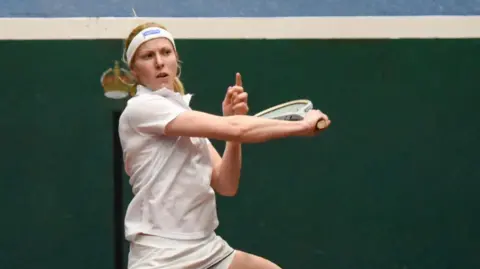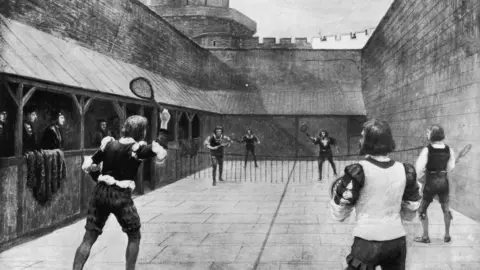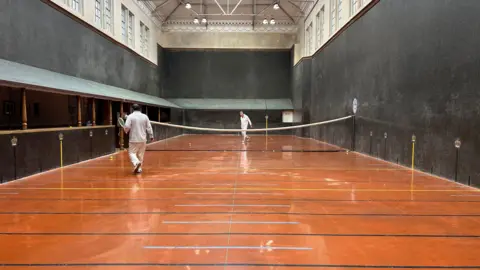Real tennis not 'all cloak and dagger' - champion
 Claire Fahey
Claire FaheyThe medieval sport of real tennis is not "all cloak and dagger", one of the game's most successful ever players has told the BBC.
Claire Fahey, who teaches at The Oratory School in Woodcote, Oxfordshire, won her 13th British Open title last month in Hampshire, and is the current world champion.
Real tennis is a court-based sport that is thought to date back up to 800 years, and was particularly loved by Henry VIII - who played at Hampton Court Palace.
Ms Fahey described it as the "ancestor to all modern racket sports" and like "a cross between what we now know as tennis, squash and chess".
"The elements of tennis obviously being that it is played over a net, the elements of squash because it's a walled game, and then chess because of the intricate scoring and strategy that's implemented throughout," she explained.
"If you are good at those three things, then real tennis might be the one for you."
 Getty Images
Getty ImagesExplaining how she initially got into the sport, the 33-year-old said: "I was really lucky actually, [when I was] 11 years old my parents moved down the road from two brand new real tennis courts.
"The rest was history - I had my first lesson, never looked back and absolutely became hooked on the game.
"A lot of the time people think of real tennis clubs are hard to get into or all cloak and dagger - absolutely not, they're just like your regular sports club."
Ms Fahey became the most successful female British Open player ever following her win at Seacourt Tennis Club on Hayling Island, Hampshire, in April.

Real tennis is played indoors with handmade balls, which are solid like a cricket ball, and wooden rackets.
The court, which Ms Fahey described as an "elongated tennis court with a sloping roof around three walls", is divided between the service end and the hazard end.
Points can be scored by hitting nets around the court including the grille, the winning gallery, which rings a bell, or the dedans
You can follow BBC Oxfordshire on Facebook, X, or Instagram.
